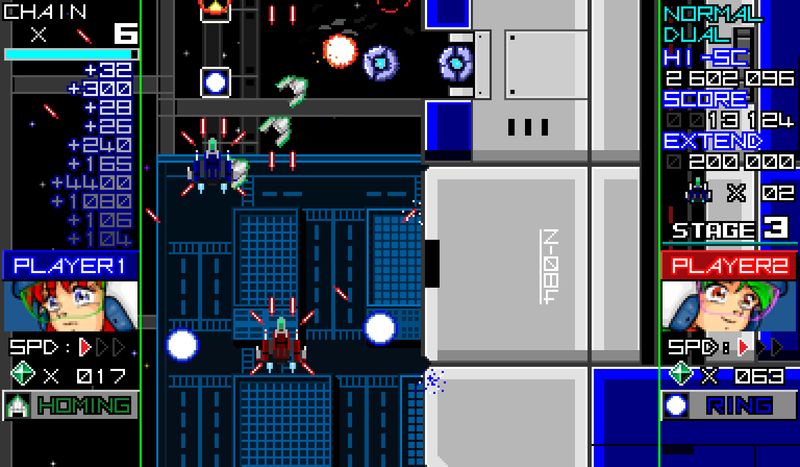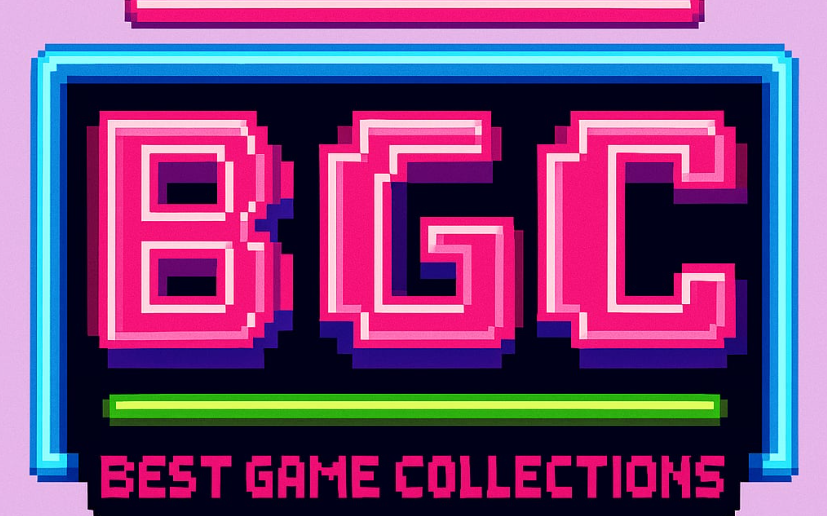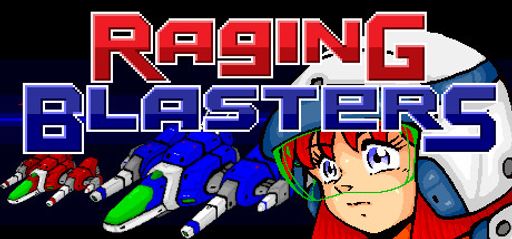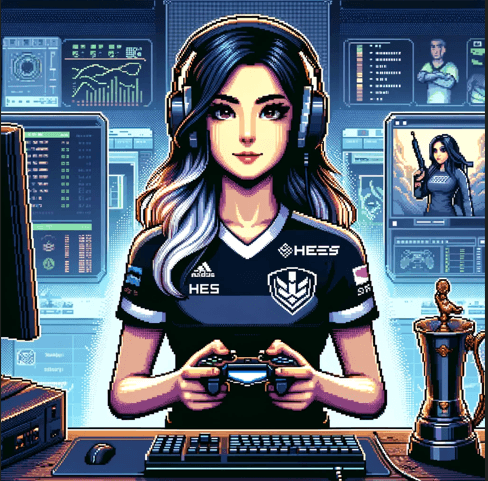 Let’s kick off with Raging Blasters by TERARIN GAMES, published in-house. I really enjoy its tight bullet patterns and the risk-reward scoring system. Players often rave, saying “the music is amazing beyond words.” Interestingly, the lead developer once topped the leaderboards in Soldier Blade.
Let’s kick off with Raging Blasters by TERARIN GAMES, published in-house. I really enjoy its tight bullet patterns and the risk-reward scoring system. Players often rave, saying “the music is amazing beyond words.” Interestingly, the lead developer once topped the leaderboards in Soldier Blade.
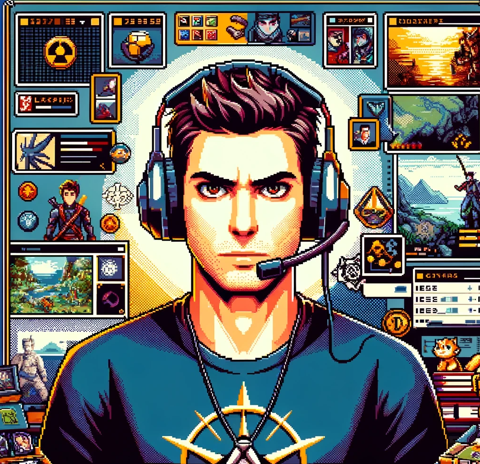 As a completionist, I really like the eight-stage Arcade mode. Notably, I counted 50 hidden crystal clusters in each stage. Picking them up boosts your score at the end of each level. Additionally, the Caravan mode’s chaining system adds real depth. You can even play co-op through Steam’s Remote Play Together.
As a completionist, I really like the eight-stage Arcade mode. Notably, I counted 50 hidden crystal clusters in each stage. Picking them up boosts your score at the end of each level. Additionally, the Caravan mode’s chaining system adds real depth. You can even play co-op through Steam’s Remote Play Together.
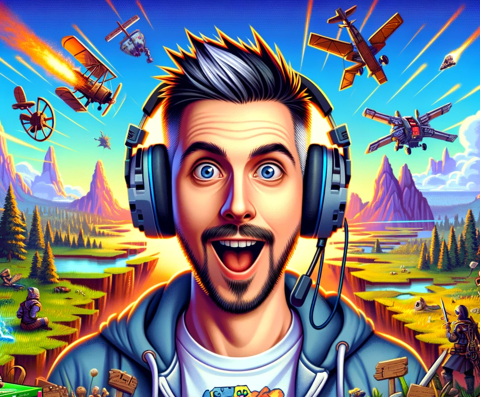 I agree completely. The fast scrolling and breakable ground blocks feel both nostalgic and new. TERARIN GAMES built the game using a custom C++ engine that’s tuned for smooth 60fps action. I love checking every corner—especially since I found secret spawn patterns in stages two and five.
I agree completely. The fast scrolling and breakable ground blocks feel both nostalgic and new. TERARIN GAMES built the game using a custom C++ engine that’s tuned for smooth 60fps action. I love checking every corner—especially since I found secret spawn patterns in stages two and five.
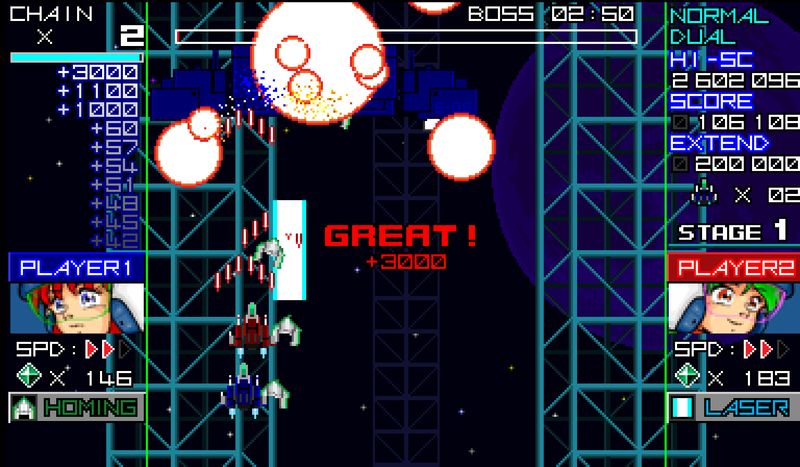
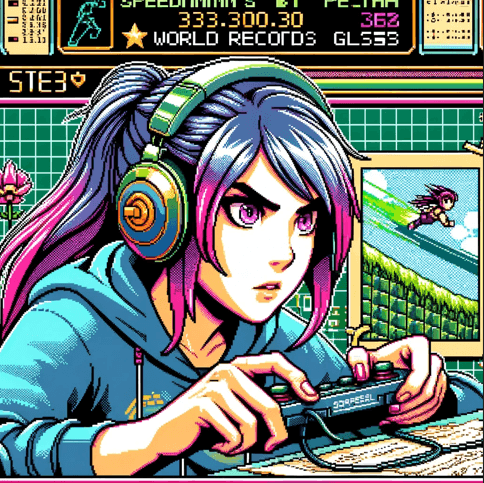 From a speedrunning perspective, the three-minute Caravan mode is pure gold. For example, you can switch speeds mid-air to “speedkill” enemies. That thruster flame at high speed even acts as a subweapon. I managed to shave off 10 seconds from my time by using frame-perfect switches with focus.
From a speedrunning perspective, the three-minute Caravan mode is pure gold. For example, you can switch speeds mid-air to “speedkill” enemies. That thruster flame at high speed even acts as a subweapon. I managed to shave off 10 seconds from my time by using frame-perfect switches with focus.
 When it comes to gameplay mechanics, the two-shot system—forward and wide—feels solid and reliable. Plus, sub-weapons change when picked up, offering five different patterns. I found it similar to Aleste’s power-up frame invincibility. Raging Blasters plays in that style but adds a modern scoring twist.
When it comes to gameplay mechanics, the two-shot system—forward and wide—feels solid and reliable. Plus, sub-weapons change when picked up, offering five different patterns. I found it similar to Aleste’s power-up frame invincibility. Raging Blasters plays in that style but adds a modern scoring twist.
 That’s true. You can remap the buttons however you like. Personally, I set the wide shot to a shoulder button. I also took the time to track each stage’s secret boss pattern. That extra layer definitely adds replay value, especially for achievement hunters.
That’s true. You can remap the buttons however you like. Personally, I set the wide shot to a shoulder button. I also took the time to track each stage’s secret boss pattern. That extra layer definitely adds replay value, especially for achievement hunters.
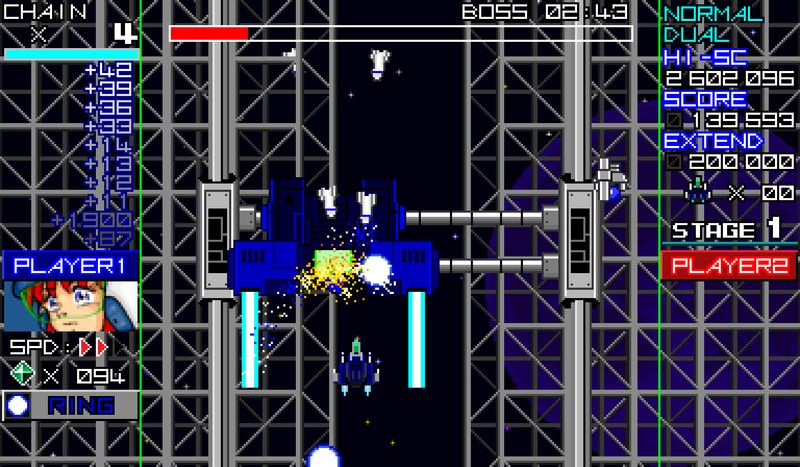
 The world-building really stands out in the stage backgrounds. For instance, you’ll see both ancient ruins and futuristic factories. In an interview, TERARIN GAMES mentioned that they drew inspiration from MegaDrive shmups. The lore text also pops up during boss intros, giving a nice touch of narrative flavor.
The world-building really stands out in the stage backgrounds. For instance, you’ll see both ancient ruins and futuristic factories. In an interview, TERARIN GAMES mentioned that they drew inspiration from MegaDrive shmups. The lore text also pops up during boss intros, giving a nice touch of narrative flavor.
 Moreover, the pacing in Caravan mode is intense. Enemies appear in tight timing windows. I suggest using each speed level wisely to keep your chain going. Yellow blocks spawn in rhythmic waves—miss one, and your chain breaks. It’s a perfect drill for speedrunners.
Moreover, the pacing in Caravan mode is intense. Enemies appear in tight timing windows. I suggest using each speed level wisely to keep your chain going. Yellow blocks spawn in rhythmic waves—miss one, and your chain breaks. It’s a perfect drill for speedrunners.
 Visually, the retro pixel art really shines. They used a custom color palette inspired by PC Engine hardware. Every animation runs at a clean 60 frames per second. I never saw any frame drops, even in co-op. That’s a big win for TERARIN GAMES’ engine.
Visually, the retro pixel art really shines. They used a custom color palette inspired by PC Engine hardware. Every animation runs at a clean 60 frames per second. I never saw any frame drops, even in co-op. That’s a big win for TERARIN GAMES’ engine.
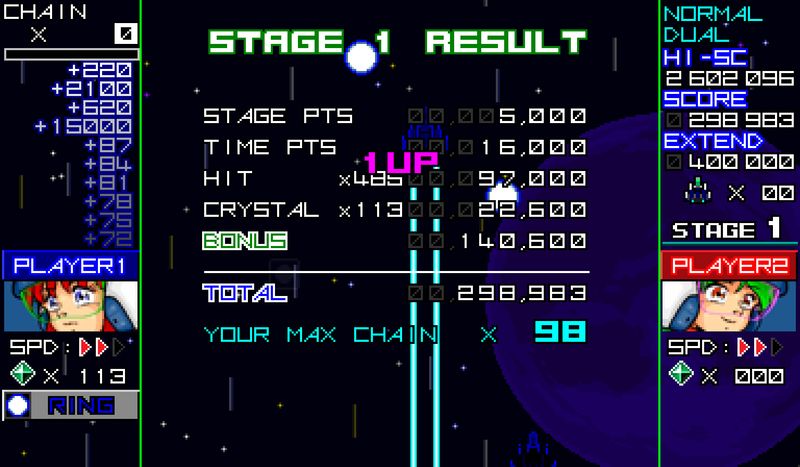
 Even the color palettes change per stage. For example, stage one glows in neon pink, while stage three fades into icy blue. They did a great job balancing clarity and style. Each boss sprite includes over 200 animation frames, which is impressive.
Even the color palettes change per stage. For example, stage one glows in neon pink, while stage three fades into icy blue. They did a great job balancing clarity and style. Each boss sprite includes over 200 animation frames, which is impressive.
 Audio-wise, the game nails that retro feel too. The soundtrack mixes chiptune with rock perfectly. My favorite track is “Blaster Overdrive” in stage four—it really gets your heart racing. TERARIN GAMES said they composed it in a Famitracker style.
Audio-wise, the game nails that retro feel too. The soundtrack mixes chiptune with rock perfectly. My favorite track is “Blaster Overdrive” in stage four—it really gets your heart racing. TERARIN GAMES said they composed it in a Famitracker style.
 The sound effects also fit well with the action. For example, the bullet-cancel pop lets you know when you’ve chained an attack. These audio cues really help with timing your speed switches.
The sound effects also fit well with the action. For example, the bullet-cancel pop lets you know when you’ve chained an attack. These audio cues really help with timing your speed switches.
 As for the story, it’s minimal but still works. You’re piloting a rebel ship fighting against a corrupt empire. The short dialogue keeps your focus on the action. It reminds me of classic shooters where the story lived in the manual.
As for the story, it’s minimal but still works. You’re piloting a rebel ship fighting against a corrupt empire. The short dialogue keeps your focus on the action. It reminds me of classic shooters where the story lived in the manual.
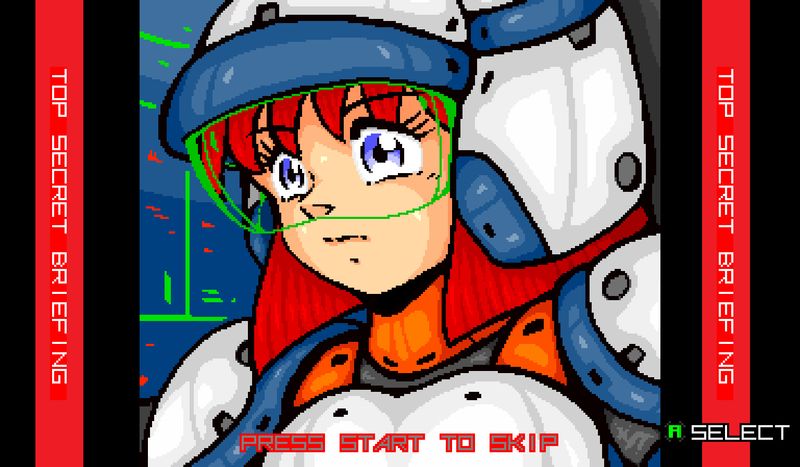
 Speaking of which, I actually catalogued each boss’s backstory from the manual PDF. That bit of lore adds nice context. I do wish there were more mid-stage cutscenes, but the pacing overall feels smooth.
Speaking of which, I actually catalogued each boss’s backstory from the manual PDF. That bit of lore adds nice context. I do wish there were more mid-stage cutscenes, but the pacing overall feels smooth.
 Character development is light, but your ship upgrades tell a quiet story of progress. That kind of narrative economy is common in STGs.
Character development is light, but your ship upgrades tell a quiet story of progress. That kind of narrative economy is common in STGs.
 I also appreciate the Dual Mode for co-op. Controlling two ships with dual sticks adds a new kind of challenge. This mode really gives variety to players who like to explore.
I also appreciate the Dual Mode for co-op. Controlling two ships with dual sticks adds a new kind of challenge. This mode really gives variety to players who like to explore.
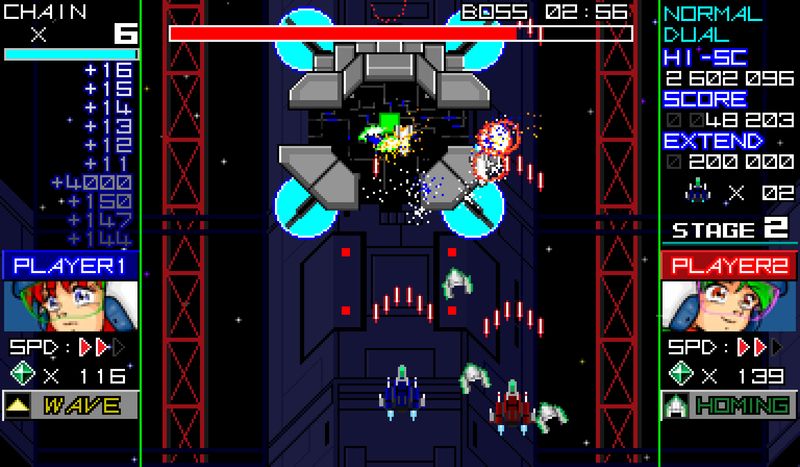
 When it comes to challenge, Normal difficulty is great for beginners. Hard mode rewards players who master chaining. Expert mode requires serious memorization. According to user feedback, the difficulty spikes around the stage six boss. Thankfully, you can adjust the difficulty or remap keys for better accessibility.
When it comes to challenge, Normal difficulty is great for beginners. Hard mode rewards players who master chaining. Expert mode requires serious memorization. According to user feedback, the difficulty spikes around the stage six boss. Thankfully, you can adjust the difficulty or remap keys for better accessibility.
 As for replay value, it’s definitely there. Online leaderboards and eight achievements kept me hooked. I found all the sub-weapon patterns in about 12 hours. The Caravan time attack pulls you back every week to chase new high scores.
As for replay value, it’s definitely there. Online leaderboards and eight achievements kept me hooked. I found all the sub-weapon patterns in about 12 hours. The Caravan time attack pulls you back every week to chase new high scores.
 Final thoughts: Raging Blasters truly stands out in the shmup scene. It blends old-school design with modern polish. It raises the bar with chaining and speedkill mechanics. Whether you’re a completionist, a speedrunner, or just a casual player, there’s something here for you.
Final thoughts: Raging Blasters truly stands out in the shmup scene. It blends old-school design with modern polish. It raises the bar with chaining and speedkill mechanics. Whether you’re a completionist, a speedrunner, or just a casual player, there’s something here for you.
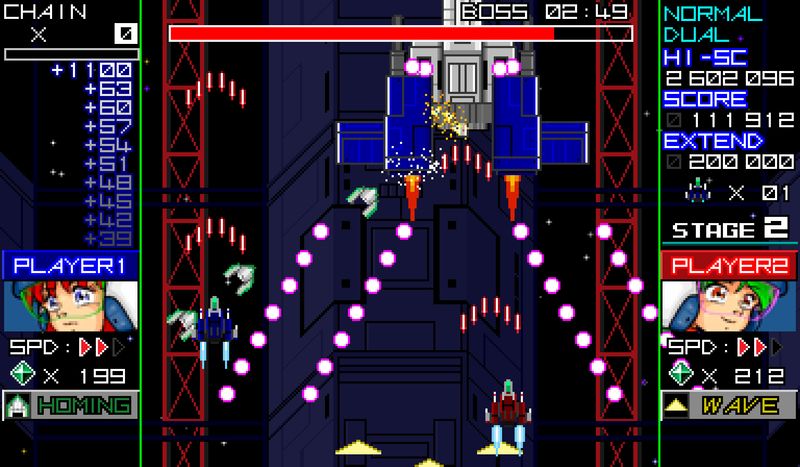
 If you enjoy fast-paced shoot-’em-ups, these titles will feel familiar and exciting. Blazing Lasers gives you a modern take on Aleste with fast stages, powerful weapons, and a tight chaining system—perfect for high-score chasers. Super Star Soldier, a PC Engine classic, leans into its Caravan roots with deep combo play and looping levels that push you to improve. GunNac stands out for its wild action and many sub-weapons, rewarding players who explore every path—just like Raging Blasters. And Image Striker—another gem by TERARIN GAMES—builds on the same speed-switch and chaining ideas, while adding wild boss fights and global leaderboards for those who love to compete. All these games are must-plays for any shmup fan who wants action, nostalgia, and challenge.
If you enjoy fast-paced shoot-’em-ups, these titles will feel familiar and exciting. Blazing Lasers gives you a modern take on Aleste with fast stages, powerful weapons, and a tight chaining system—perfect for high-score chasers. Super Star Soldier, a PC Engine classic, leans into its Caravan roots with deep combo play and looping levels that push you to improve. GunNac stands out for its wild action and many sub-weapons, rewarding players who explore every path—just like Raging Blasters. And Image Striker—another gem by TERARIN GAMES—builds on the same speed-switch and chaining ideas, while adding wild boss fights and global leaderboards for those who love to compete. All these games are must-plays for any shmup fan who wants action, nostalgia, and challenge.
